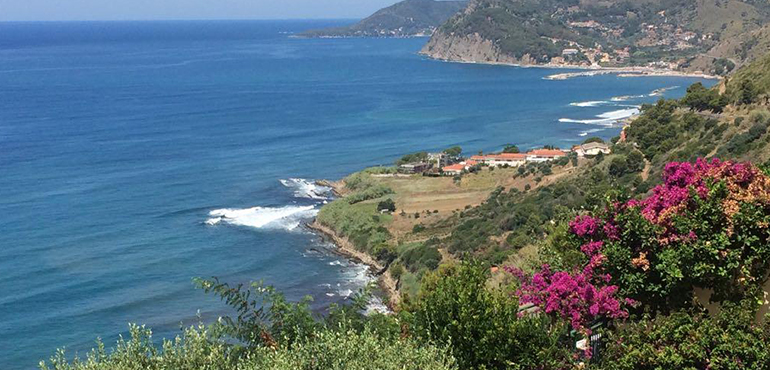
San Mauro Cilento

The territory of the municipality of San Mauro Cilento has different characteristics as it moves up from the coast towards the hills, thanks to a millennial model of agricultural development introduced by the Benedictine monks.
Still today, hill farming is the basis of the economy: olive oil, wine, fig processing, orchards, vegetable gardens, seedlings.
The various inhabited centers are perched on the side or on the ridge of a hill and present common elements: the houses leaning against each other and surrounded by vegetable gardens, the limestone walls, the roofs built with terracotta tiles, some bell tower, the noble palaces with courtyard, well, oven and cellar.
Of inhabited center with name "Santo Mauro" one already speaks in a document of 1092.
On the Sala hill stands a rural chapel also known as Fiumicello, a 12th-century town.
The valley of the Camarano river meets the Quarrata hill, site of the oldest village of San Mauro: the first news dates back to 774, the year of Arechi's privilege, which divided the territory into "condomas".
In the noble quarter of Aria dei Santi, there is' "U Palazzo" which was the residence of the last heir to the throne of Constantinople, Ruggero Paleologo Porfirogenito, son of Tommaso, brother of Emperor Constantine XI, who lived there from 1441 and up at his death.
At the fall of the city in 1453, he already lived in San Mauro Cilento to guarantee a treaty with the king of Naples, Alfonso V.
Many Greek dignitaries joined him and here they founded a Greek community that was initially recognized in the ancient church of Santa Sofia and subsequently they erected a church named after the Holy Spirit.
The exhibition space of the "Museum and Archive and Library for the socio-religious history of the Ancient Cilento" is located within a seventeenth-century structure and contains finds from the country's economic, cultural, artistic, religious and popular history.
The chapel of the Carmine, once a Carmelite convent, probably represents the original center of San Mauro Cilento due to the presence of a cave carved out of the rock that turns to the east, home, once, of a cell or, perhaps, of a small Basilian monastery.
From the village it is possible to reach, through the naturalistic path of gentle flowers and chestnut woods, the peak of Mount della Stella (m. 1131): "Petilia", in legend; "Cilento", in antiquity.
There arose a fortified village following the barbarian raids in the 5th-6th century that forced the inhabitants of the coastal strip between Velia and Paestum to take refuge in mountain places.
They used as a natural defense the huge sandstone blocks that the people called the Mòrge and that like walls surround the summit from south-west to north-east.
Between the 7th and 8th centuries, which fell to the Lombards, it became the seat of Gastaldato (military and administrative district) with the name of Lucania.
On the top of the mountain stands the chapel dedicated to the Madonna della Stella, already present in 1187 with the title of "Santa Maria di Cilento".

